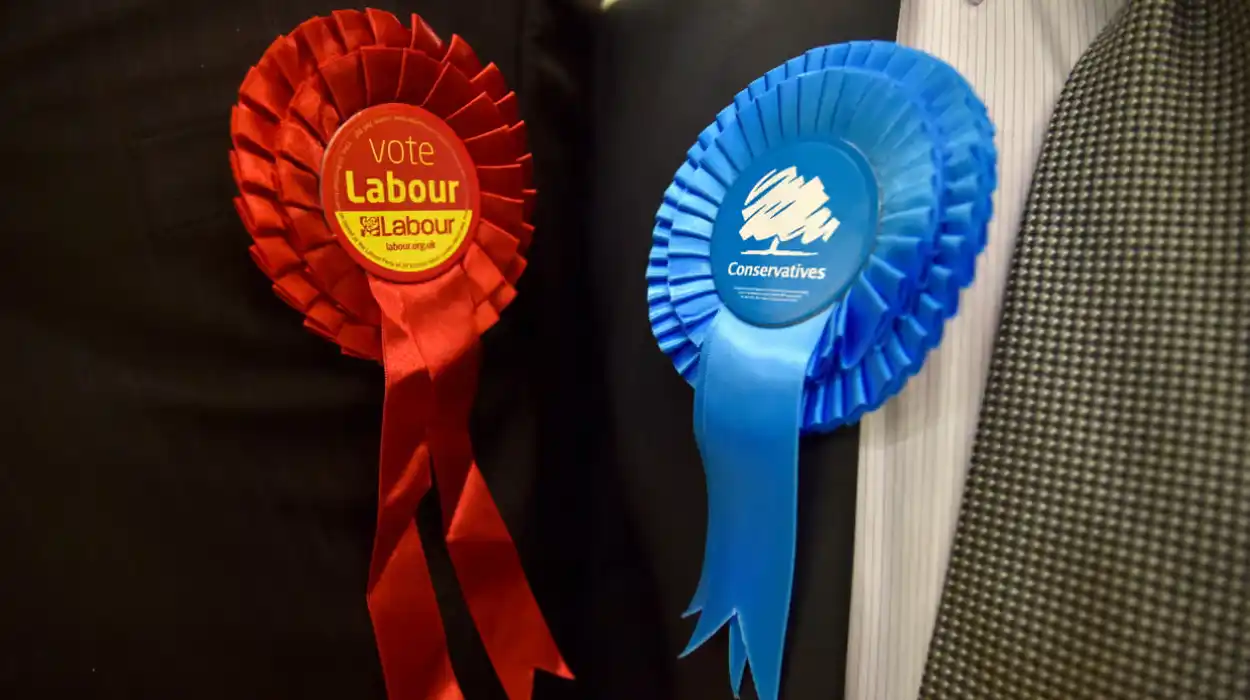The two-party system has framed discussions regarding British politics for a long time. Observers will often suggest that the UK political system is dominated by two large parties: the Conservative Party and the Labour Party. The modern UK political landscape is far more nuanced. This article investigates whether the two-party system is a true political feature of Britain or merely a myth that reinforces a dynamic political process that is evolving in the country.
What is the Two-Party System?
A two-party system is one where two main parties compete for political power, usually alternating in forming governments. In a two-party system there are smaller parties, but typically they do not have the power of the two main parties. The UK has been regularly used as an example of a two-party system, with the Conservative and Labour parties, since the early twentieth century, usually alternating in government. The definition above fails to take into account the changes that have occurred and the changing political situation in British politics, especially in devolved nations, in recent decades, in light of an increase in variability in voting patterns.
The Effect of the First-Past-the-Post Electoral System
An important part of the argument for a two-party system that is found in the UK relates to the First-Past-the-Post (FPTP) voting system for general elections. The electoral system is biased toward the largest parties since the winning candidate in each constituency can only have a plurality (not a majority) of votes. If a small party is gaining through moving votes nationally, it is often very hard for them to get seats in parliament. This has contributed toward the Labour Party and Conservative Party being dominant for decades while continuing the perceived notion of a two-party system.

Evidence Supporting the Two-Party Reality
The case for a two-party system is supported by a number of factors:
- Control of Government: Since 1945, prime ministers have only been from the Labour or Conservative party.
- Seats Share: A high proportion of seats in the House of Commons go to the two biggest parties.
- Public Perception: A norm of tactical voting against small parties, with the perception of an election as between Labour / Conservative.
- Membership & Funding: The biggest donations and memberships revolve around the two biggest parties; this rewards structural advantages to them.
The two-party system is not simply a myth; it is a working reality at the level of UK-wide governance.
Cracks in the Two-Party System
Despite the norm for a considerable period, the two-party system in the UK has come under strain. The existence of smaller parties, regional parties, and issue-specific parties limits the accuracy of the description of UK politics as two-party.
Appearance of Third Parties
The Liberal Democrats have broken the two-party monopoly since their creation in 1988, especially in constituencies where tactical voting has swayed in their favor. Although they do not usually win large numbers of seats and have influence, their most consequential influence came with their role in the 2010 coalition government.
Nationalist Parties in Devolved Nations
Organizations such as the Scottish National Party (SNP), Plaid Cymru, and Northern Ireland’s DUP and Sinn Féin can be influential in regional politics. For example, the SNP has now become the leading party in Scotland to the point that the idea of a two-party system in the nation seems completely redundant.
Emergence of Issue-Based Parties
The Green Party and Reform UK (formerly UKIP), and other smaller parties, have shown the ability of smaller parties to intervene in debates, particularly in terms of environmental policy and Brexit. They maintain a broad likelihood of winning smaller numbers of seats, but their influence on national discussion across the UK is nonetheless.
The 2010 Coalition Government
An interesting dynamic took place during the 2010 general election. The whole election produced a hung parliament– that is, a parliament whereby no party gained an outright majority. That election resulted in a coalition (between the Conservatives and Liberals’ making this a government and breaking the tradition of a two-party cycle. The coalition has shown how smaller parties can be critical in fractured political environments and also how delicate the two-party model can be when we start to lose voter loyalty and commitment.
Devolution and the Multiparty Reality
Devolved legislatures in Scotland, Wales, and Northern Ireland have contributed to regional parties being more visible. For instance:
- Scotland: SNP has been in power for most of the 21st century and transferred power from Labour’s previous position of affluence.
- Wales: Plaid Cymru is playing a stabilizing role alongside Labour as the largest party.
- Northern Ireland: Politics is less about Labour and Conservatives but more about nationalist and unionist parties with legally established devolved powers.
This regional multiparty context makes it difficult to refer to the UK as simply two-party—as national governance is no longer the only active seat of political power.
Voter Behavior and Declining Loyalty
One of the reasons the two-party narrative continues to feel more like history than fact is that voter loyalty is declining. In decades past, class and community identities principally dictated whether a voter would support Labour or Conservative. Now that politics are more visible because of information and a media culture, and in a new era of political centrism, voters appear more willing to move across elections to different parties. Issue-based concerns such as Brexit, climate change, and economic inequality have created an environment for smaller parties to flourish at the foundations of the two-party monopoly.

Brexit: A Challenge to the Two-Party Model
The Brexit referendum in 2016 revealed societal divisions that do not conform to the traditional Labour-Conservative divides. Some of these divisions were exploited by UKIP, and later the Brexit Party, helped to shape the national conversation on Brexit, and pushed the Conservative government into a position of being more ‘harder’ in their departure from the EU. It also demonstrated how single-issue parties were able to disrupt the conventional order and change the dynamic of politics in a conventional three-party model; that is not just about two parties, we were told.
The Myth and Reality Are Coexisting
To say the UK is a strict two-party system is misleading, and to say it is entirely a myth is not accurate either. Certainly, at the parliamentary and prime ministerial level, the two-party structure is a reality. But at regional levels and in terms of voter preferences, the reality is fragmented. The hybrid structure suggests that two parties still dominate at the central government, but they must contend and negotiate with smaller parties, regional parties, and issue-based parties.


